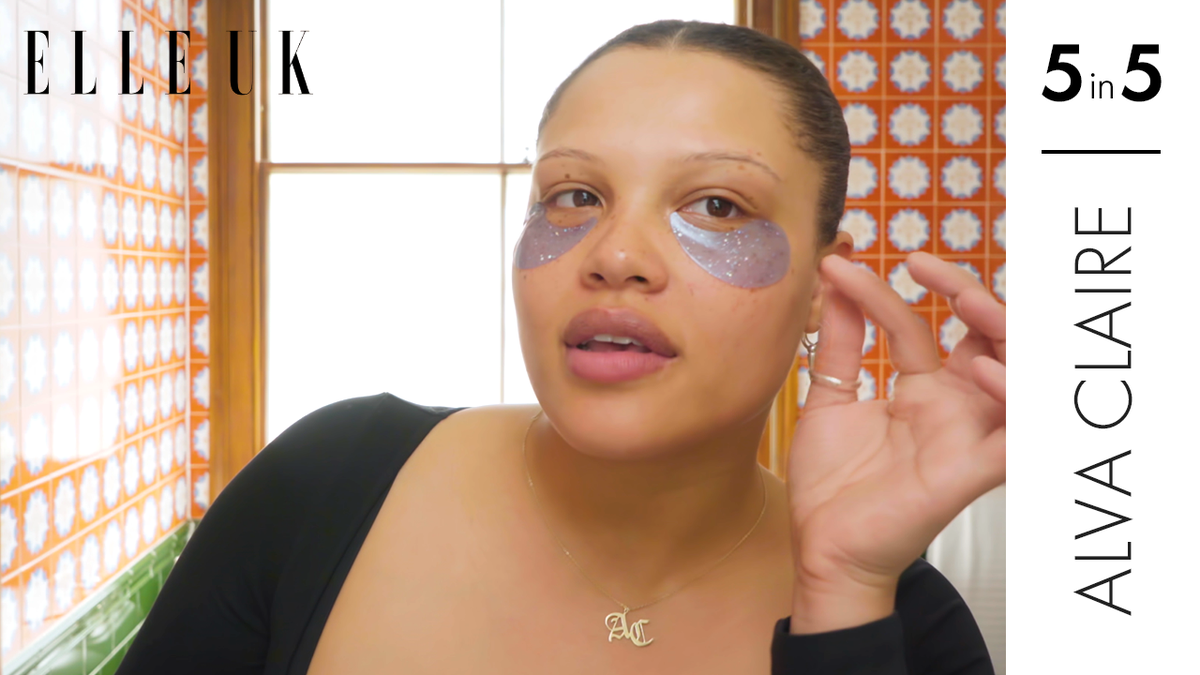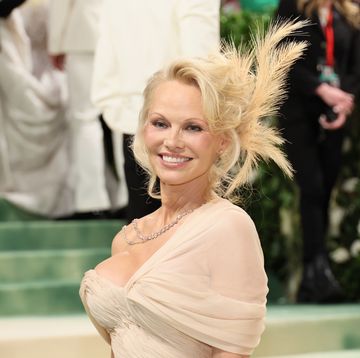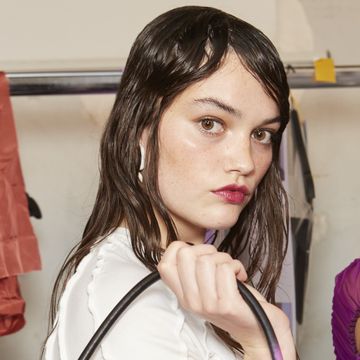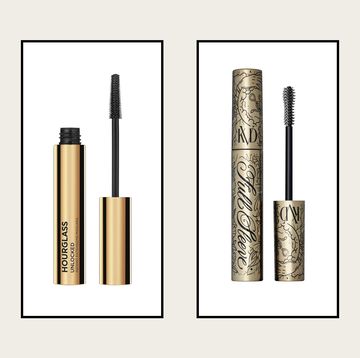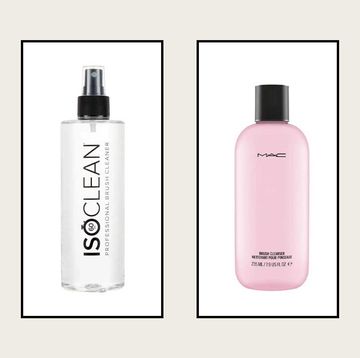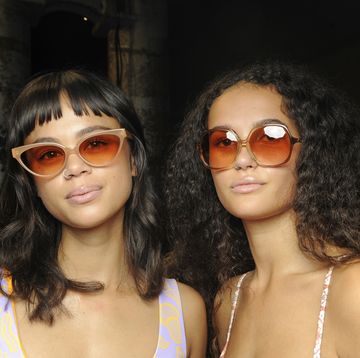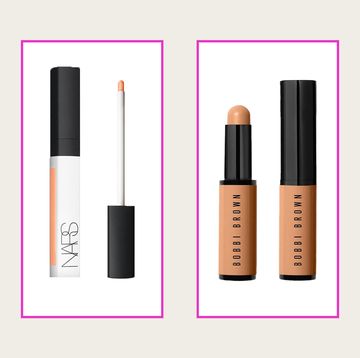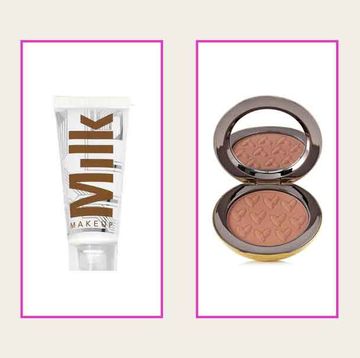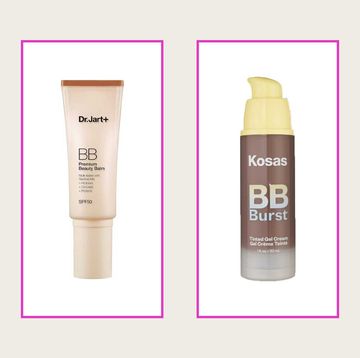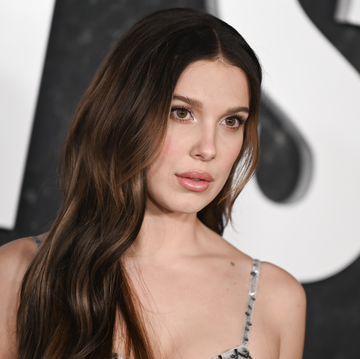My obsession with beauty products was passed down to me by my severely sight impaired (SSI) mother. From her, I inherited a taste for expensive perfumes, a love for decadent bubble baths, and the concept that pedicures are an essential element of self-care. Her brows are always groomed and she’s a big fan of coral blusher and beachy waves, but the beauty industry doesn’t make it easy for her, or the other 290 million visually impaired people around the world, to get involved.
In fact, many beauty brands are completely excluding the blind community, from how products are designed and packaged, to how they’re marketed and sold. A childhood of trawling through the beauty aisles as my mum’s ‘eyes’ and stuttering over words like ‘ylang ylang’ and ‘décolletage’ are a testament to this. And barely any progress has been made since. I still have to line up my mum’s skincare in order of use and guide her through using new make-up, all because the beauty industry doesn’t care enough to make simple tweaks to be inclusive of visually impaired people.
Yes, the path to accessibility has been trodden by some beauty brands, but it’s cheaper and more convenient for others to ignore an entire demographic of people than it is to enforce change.
Society has a warped perception of what it means to be blind, but blind beauty lovers exist (there are a lot of them). Most people cannot fathom why a blind person would contour, fake tan or dye their hair, but beauty is about ritual, creativity, self-care and identity as much as it is about appearance. For blind content creator Sassy Wyatt, beauty is a pillar of self-confidence. 'Society expects very little of me to look after my appearance,' the 31-year-old explained. 'But I wasn’t born blind so I know the beauty of colour and the stunning artistry of make-up. Beauty products can help you be the person you want to be, and I feel confident and put together when I’m wearing bold plum lipstick.'
Blind 26-year-old influencer Lucy Edwards sees colours as 'feelings' and says beauty products helped her to retain her identity after sight loss. 'I was told by society that beauty was never going to be something that I could participate in, but I didn’t want to lose me when I lost my sight,' says Edwards. 'I’m still in here. I’m blind, not broken.'
So, how can the beauty industry be more accessible? Brands could start by labelling their packaging to help blind people accurately identify their products. Only a few brands such as L’Occitane, Bioderma and Dr. Jart+ currently use braille on their packaging. This deficit is partly because it’s so expensive to produce. To cut costs, founder of sight-loss inclusive brand Blind Beauty, Hazal Baybasin, is making her own labels with a braille printer and sticking them on products one by one. 'There are only a handful of manufacturers and suppliers in the UK that will put braille on packaging and it’s very, very, very expensive, so I can understand why so many don’t,' the 31-year-old visually impaired business owner explained.
'I’d have to increase product prices to make it possible, but I don't think it's fair to charge somebody more to make something accessible for them. It’s frustrating. If you’re a multi-million dollar company, why would you not make your product accessible if you can afford to?'
Another reason why brands see little value in implementing braille packaging is that only 10% of blind and SSI people can actually read braille, so the cost might not seem worth it. Instead, all brands could adopt a single universal tactile language so that the whole community can read through touch. Haircare brand Herbal Essences is one of the pioneers in this field, adding raised stripes to their shampoo bottles and raised circles to their conditioner bottles in 2020. In order for this to be rolled out on a mass scale, brands would need to agree on the same symbols and change the moulds and lasers in production lines for this to work. It might be pricey, but this one-off cost would make the daily lives of millions a little bit easier.
In the meantime, the RNIB Penfriend is filling the labelling gap. This handy device allows you to record audio labels for your products, making the inevitable rummage through a toiletry bag feel like less of a lucky dip. Even so, you’ll still need a sighted companion to help you label your products, which feels like yet another reason why it would be so much better if packaging were labelled by brands at the source. It’s the only way to enable blind people to identify products independently at home.
You’d think that shopping online would be the more efficient option for blind and SSI people, but it’s not. Most companies aren’t designing their websites to be compatible with the screen readers that blind people use. Although companies legally have to comply with the Web Content Accessibility Guidelines, which means using alt text to audio-explain graphics and pictures, this is often too vague and descriptions rarely include key details such as ingredients, measurements and instructions.
Site developers seem to think that blind people don’t care about colour, either. Quirky shade names might be novelty for sighted people, but naming shades in an eyeshadow palette ‘boujee’ or ‘cool breeze’ without a description of the colour is useless if you're unable to see the actual product. Blind people need the specifics written down in alt text – is it hot pink or pastel pink, is it shimmery or matte? Ask yourself whether you'd buy a beauty product without knowing this information and the answer is almost definitely no.
Shopping in store is the only remaining option, but it can be extremely anxiety-inducing for those that can't see. Shops aren’t set up for blind people to leisurely peruse, determine preferences or look for dupes, since you can’t go around sticking your fingers and nose into every tester. To be successful, you have to arrive with a detailed shopping list and rely heavily on the assistance of staff. Unfortunately, the average retail worker hasn’t had thorough disability training and is sometimes too busy to provide the level of assistance a blind person requires. 'I’ve had incidents where staff are totally silent because they don’t know what to say or do, but I give them no choice but to help me,' says Wyatt.
Finding shop floor assistants is a challenge in itself and can often lead to embarrassing scenarios when accidentally approaching a customer instead of a member of staff. But, the solution is obvious. All stores need a raised line on the floor, starting from the door and leading to a help desk where someone is on hand to help any disabled person. Something so simple could be a game-changer.
When we talk about accessibility, we can’t ignore the financial barriers stacked up against blind people. Only 25% of blind and SSI people in the UK are employed, so most don’t have disposable income to spend on beauty products. Despite money concerns, blind people are often forced to book make-up services at luxury brands in order to get adequate and in-depth assistance. Sounds sensible, right? Well, these detailed tutorials are normally only redeemable against the purchase of multiple pricey products. 'High-end brands are often the only choice we have as they're often the only ones who will sit down with us and tell us how to do our make-up,' says Edwards. 'But, we have to admit that the employment rate in our community is not high and we can’t afford to spend £45 on one eyeshadow palette.'
This isn’t just problematic, it’s outrageously unethical. You shouldn’t need a receipt to gain access to help.
It’s not all gloom and doom, though. The implementation of NaviLens QR codes on Pantene packaging marks a recent leap towards in store accessibility. The free NaviLens mobile app has been designed specifically for blind people and can detect NaviLens codes on products from 12 metres away, without focus or pointing your camera directly at the code. This revolutionary technology can even help you find an item on the shelf and read out the details of a product through your phone. NaviLens is offering blind people hope that a day where they can shop independently is on its way. 'I remember standing in front of the Pantene shelf and bursting into tears,' shares Edwards, a Pantene ambassador. 'I dream of the day that I walk into a shop and everything has NaviLens codes on it, and suddenly my phone is the gateway to being able to pick my own things.'
The reality is that the beauty industry has the tools to include blind and SSI people, but isn’t widely using them. There’s no shame in being uneducated about a disability you’ve never personally encountered, but more beauty brands need to start listening to the millions of blind people crying out to be catered to. Knowing you have the funds and technology to improve the lives of a minority group and not acting on it is unacceptable. Beauty brands have the power to extend the joy of beauty to the blind community, and it’s time we hold them accountable.

